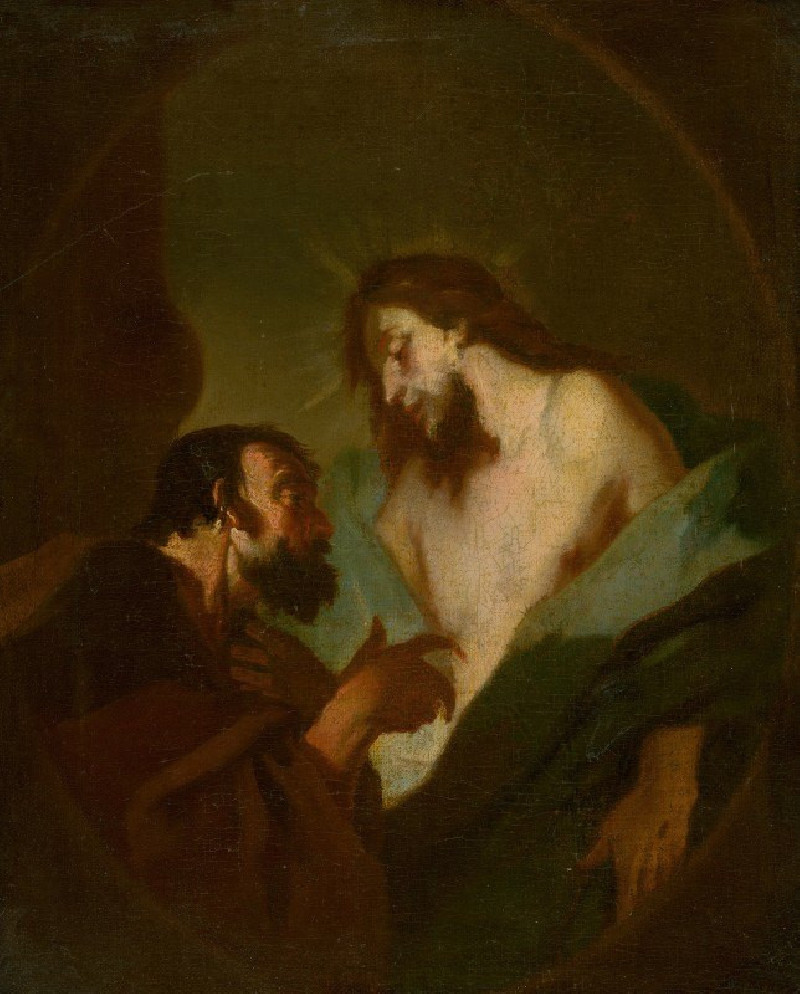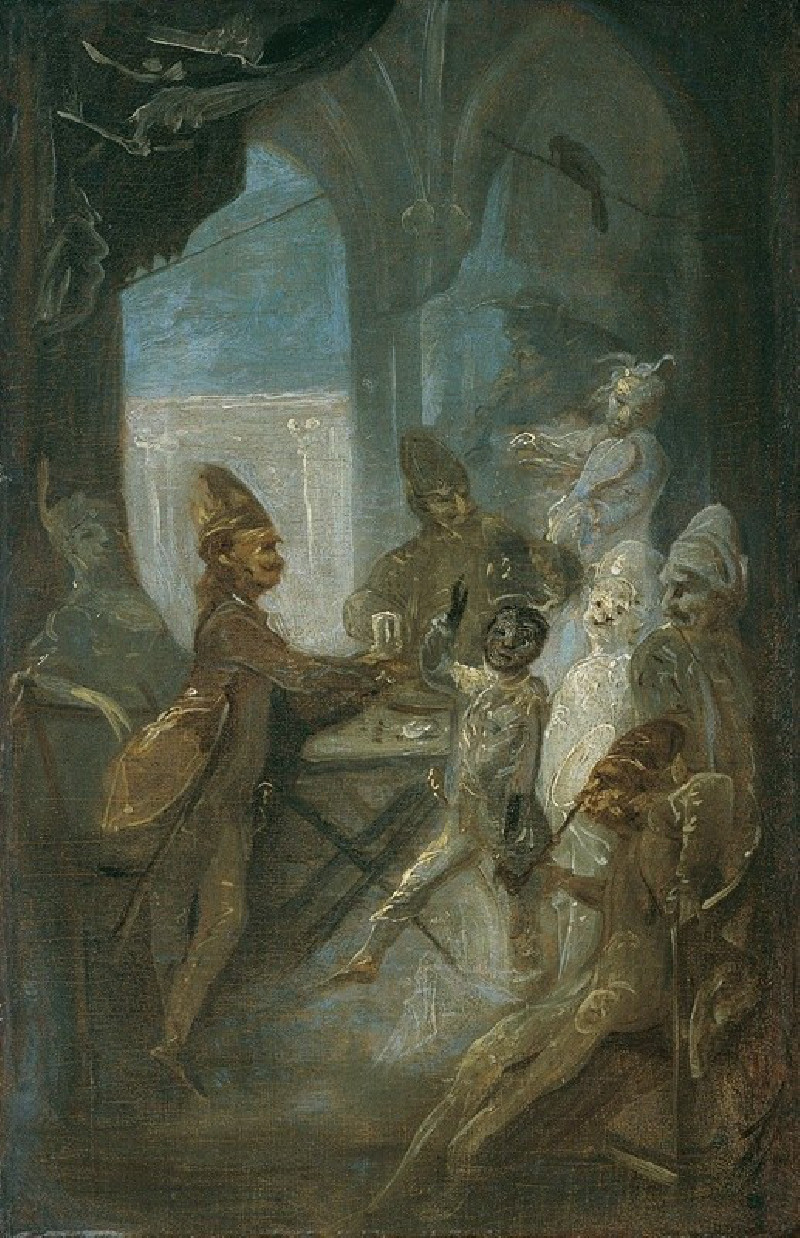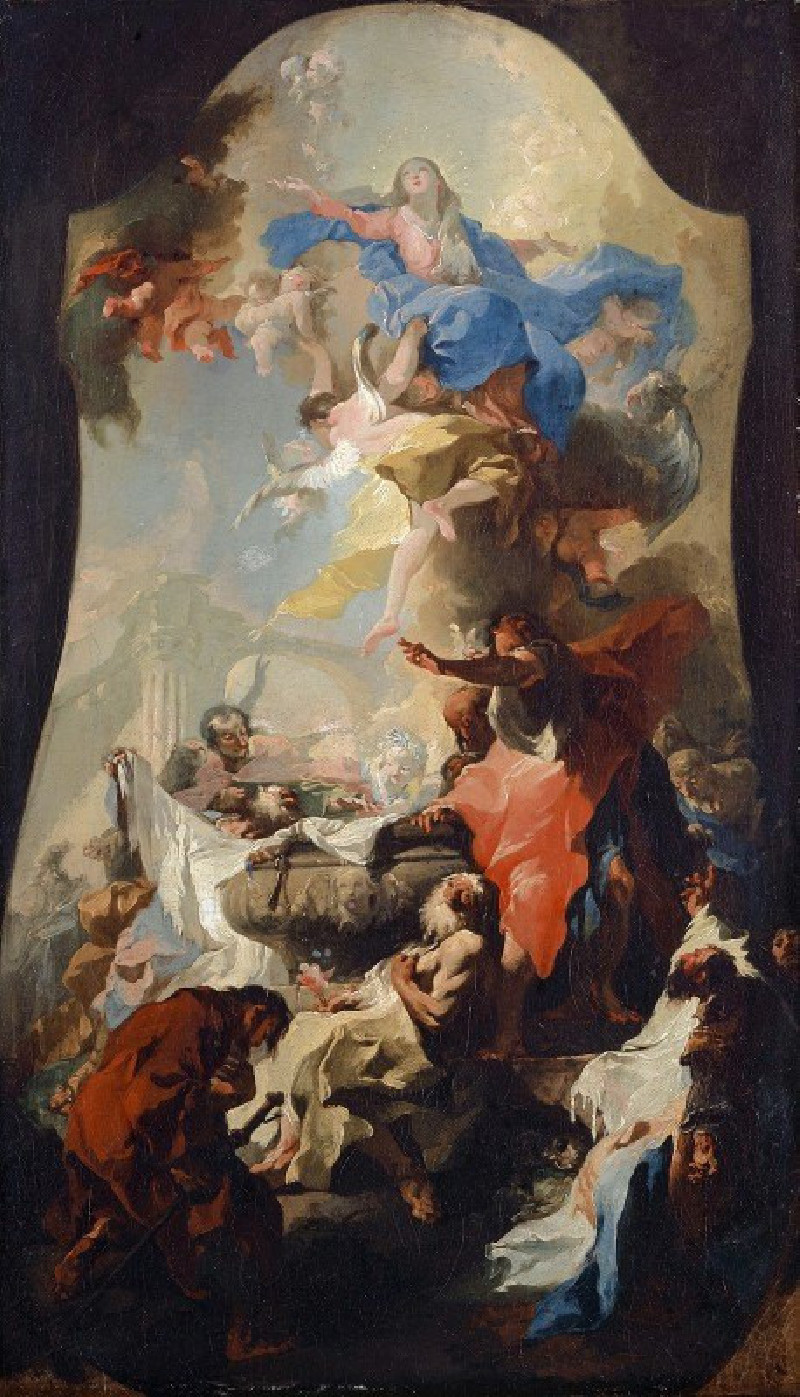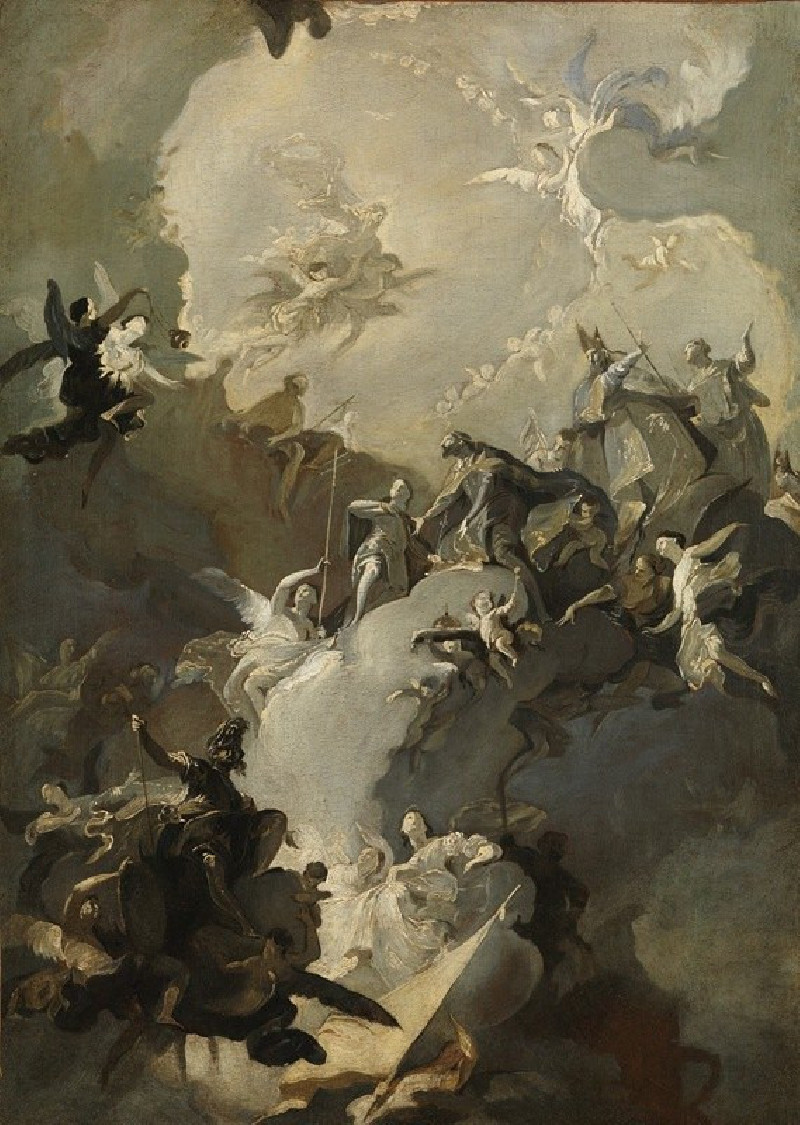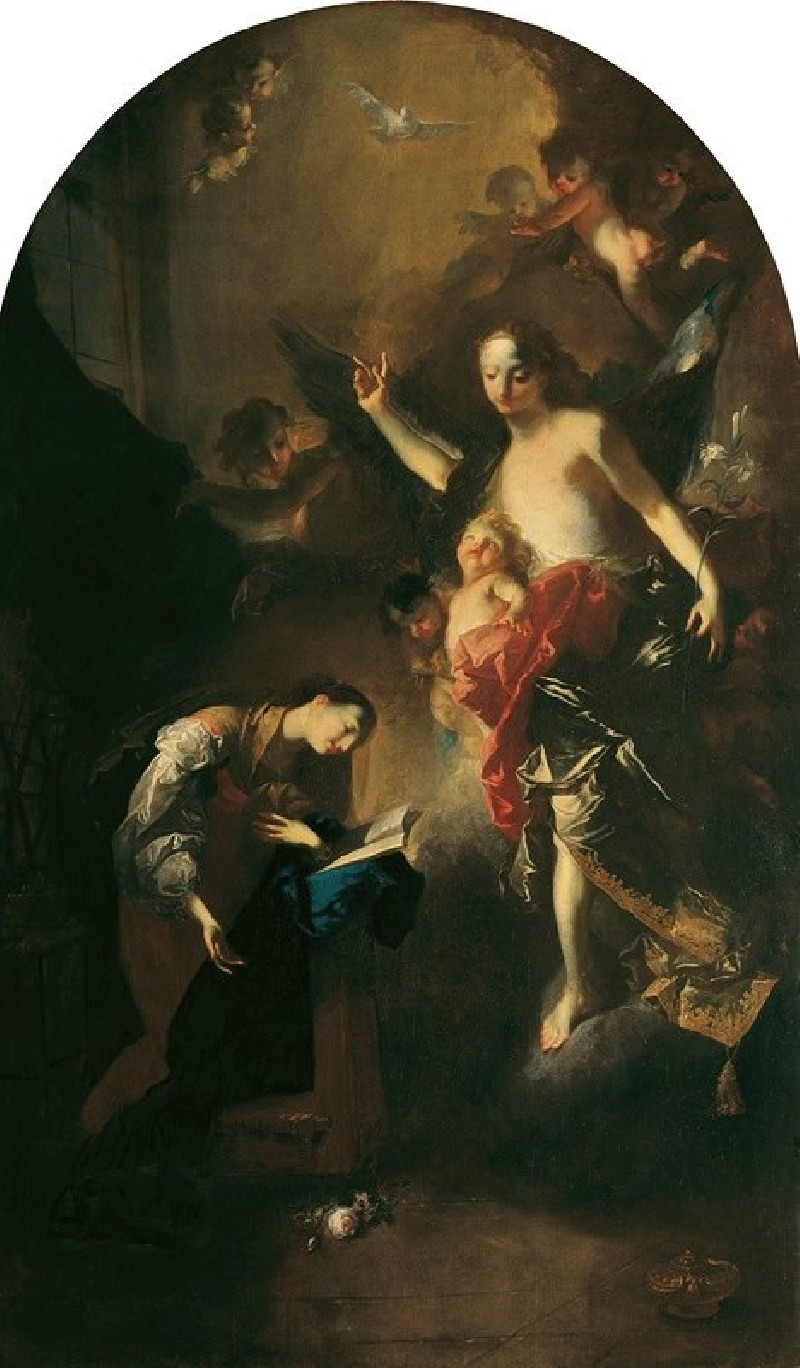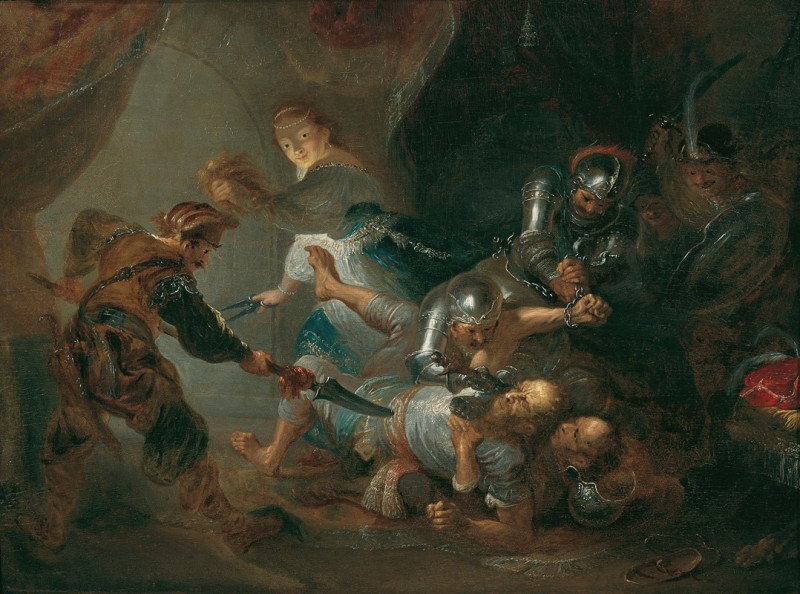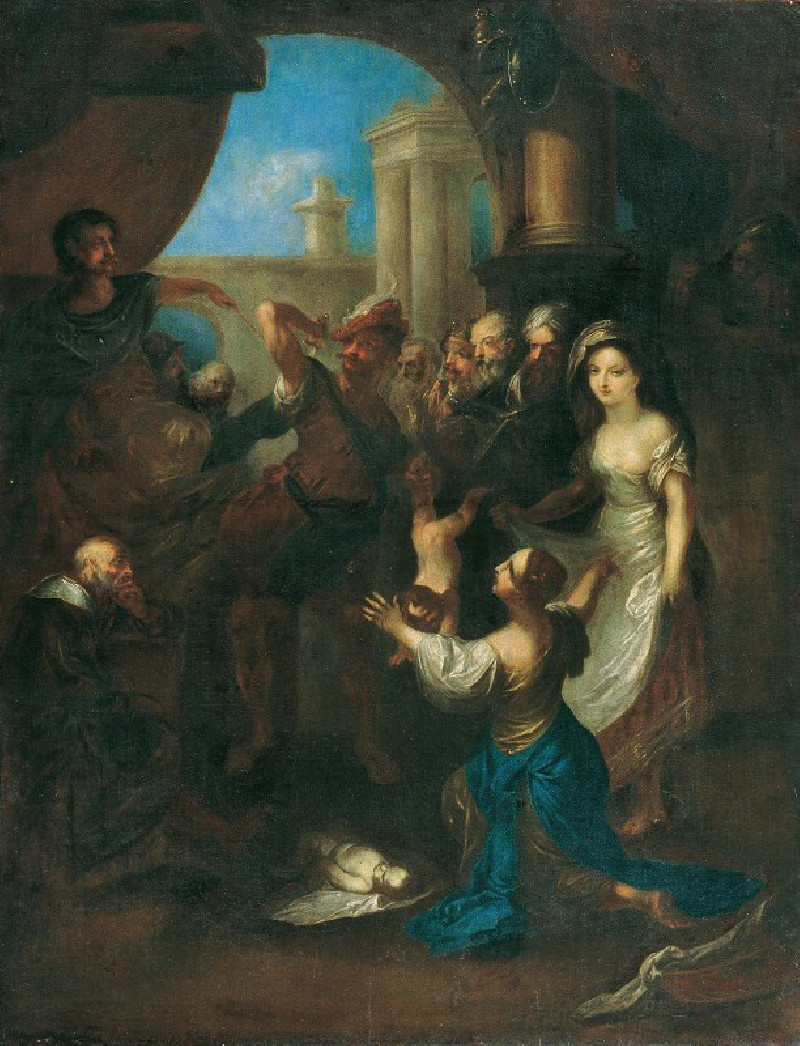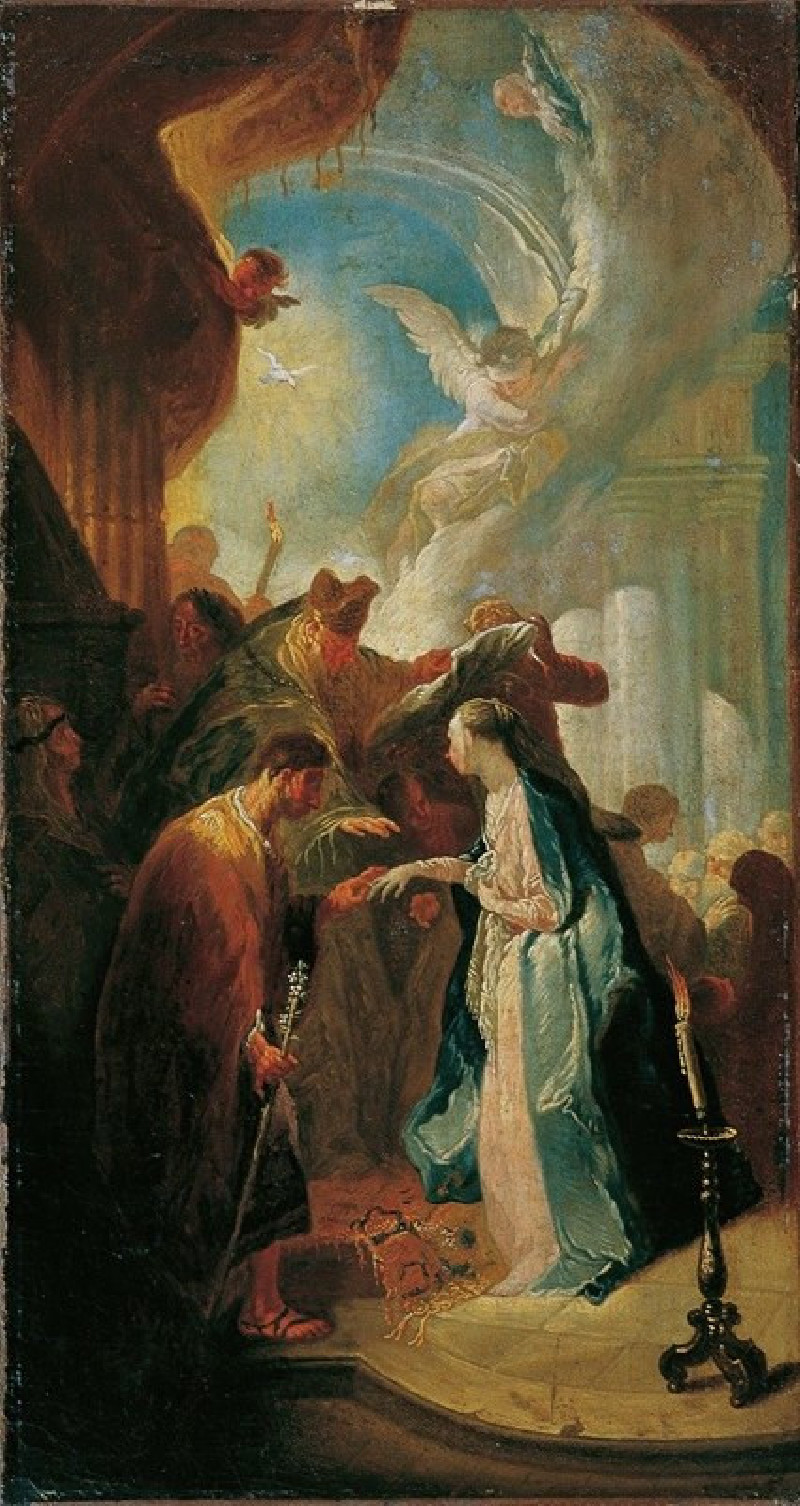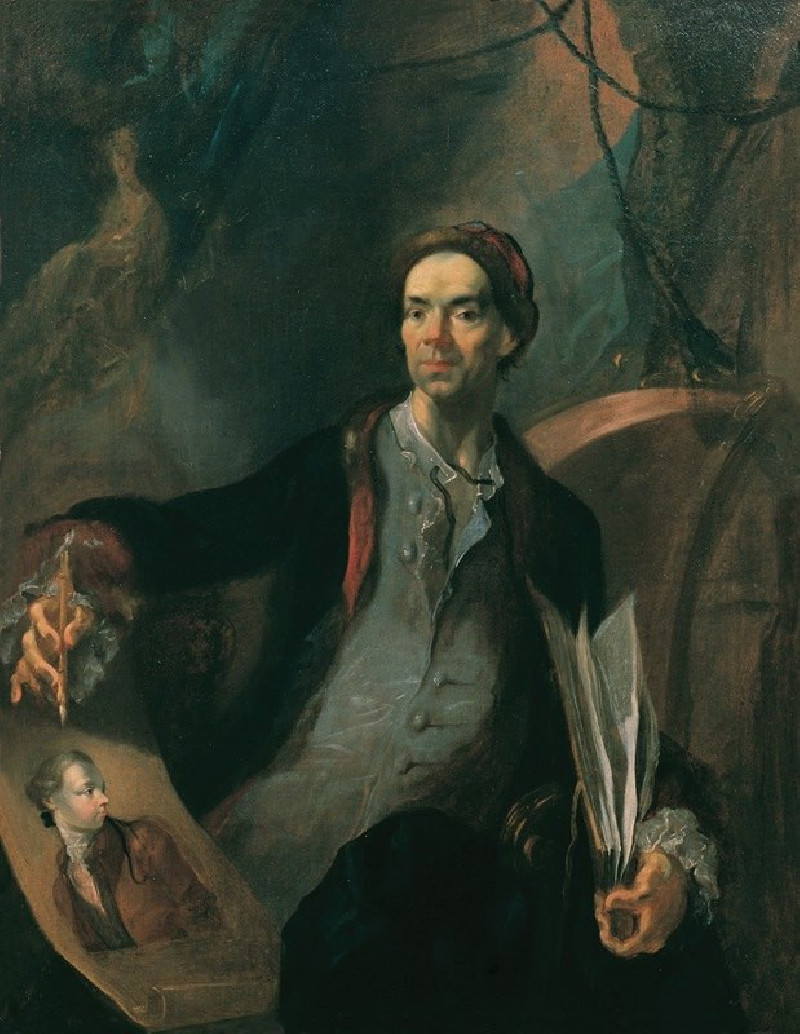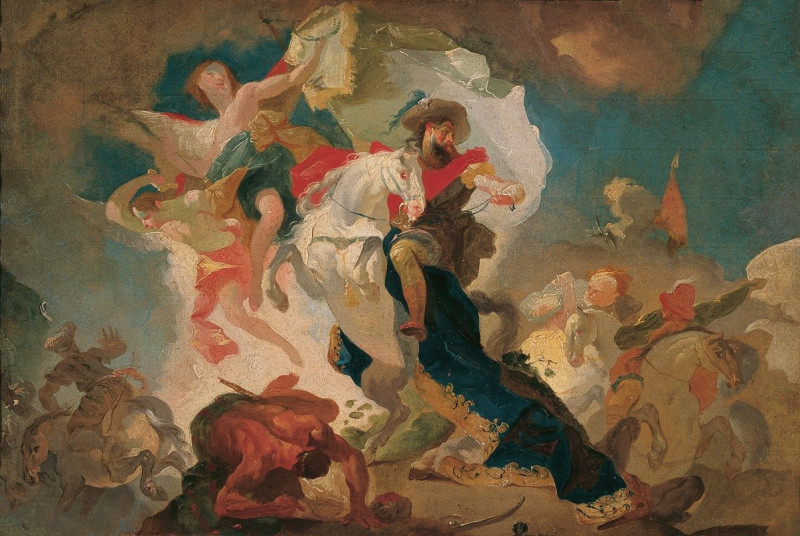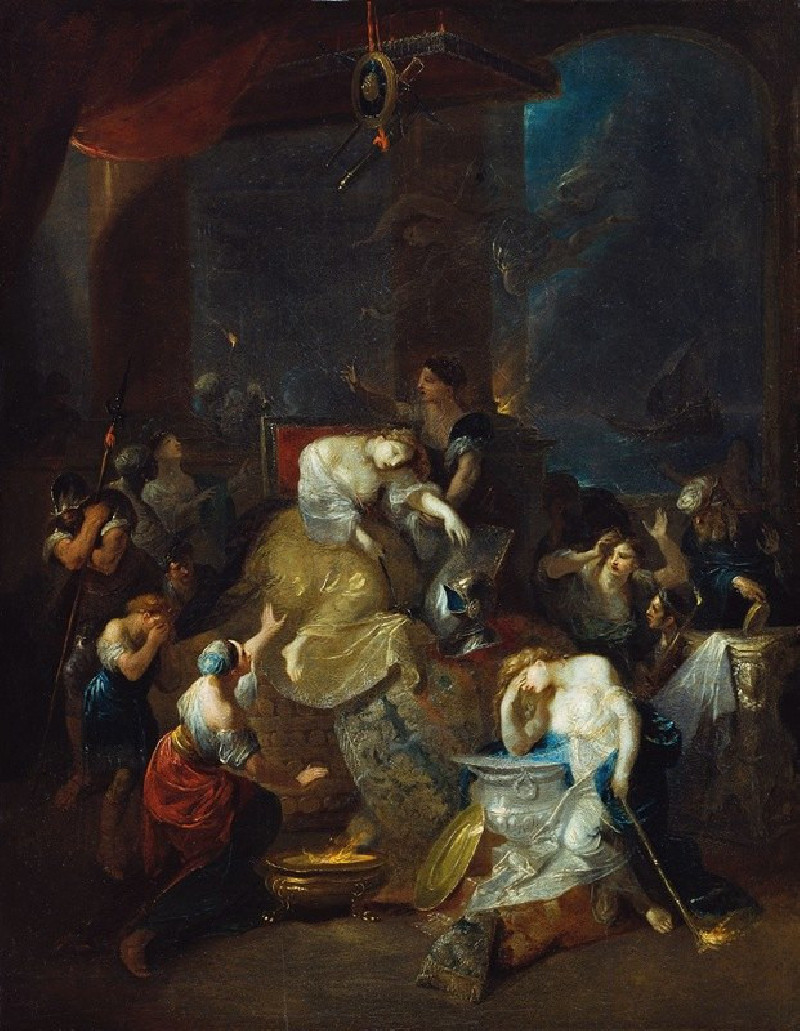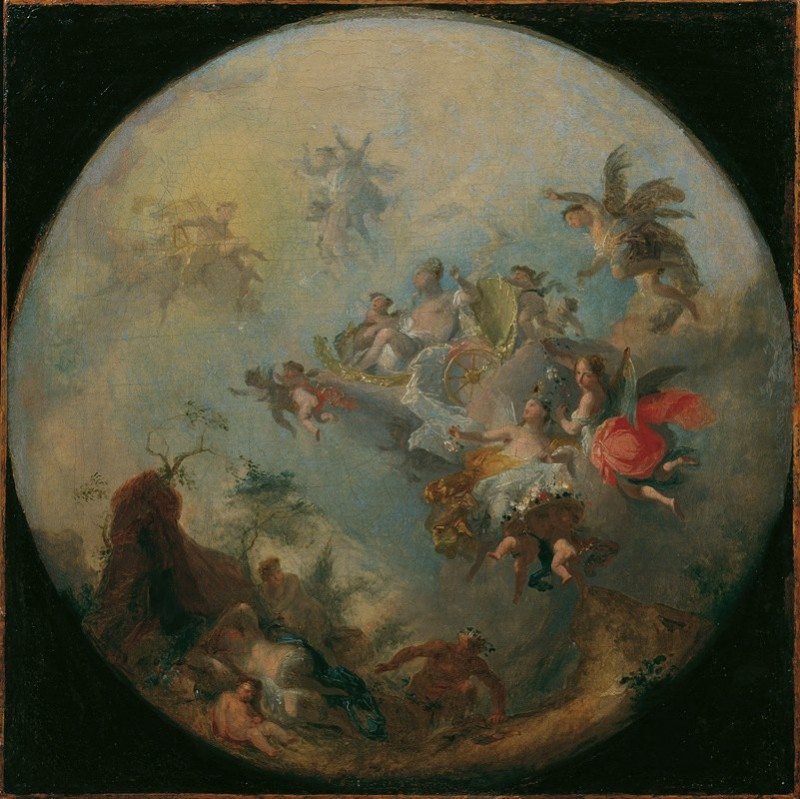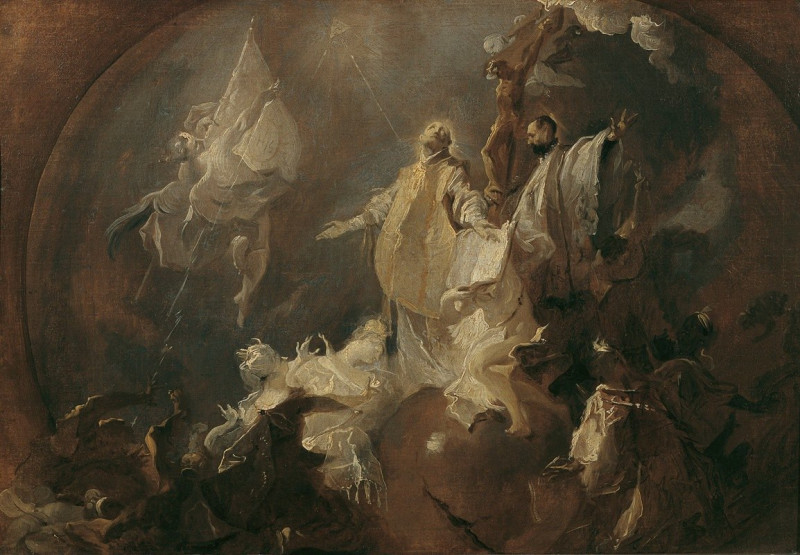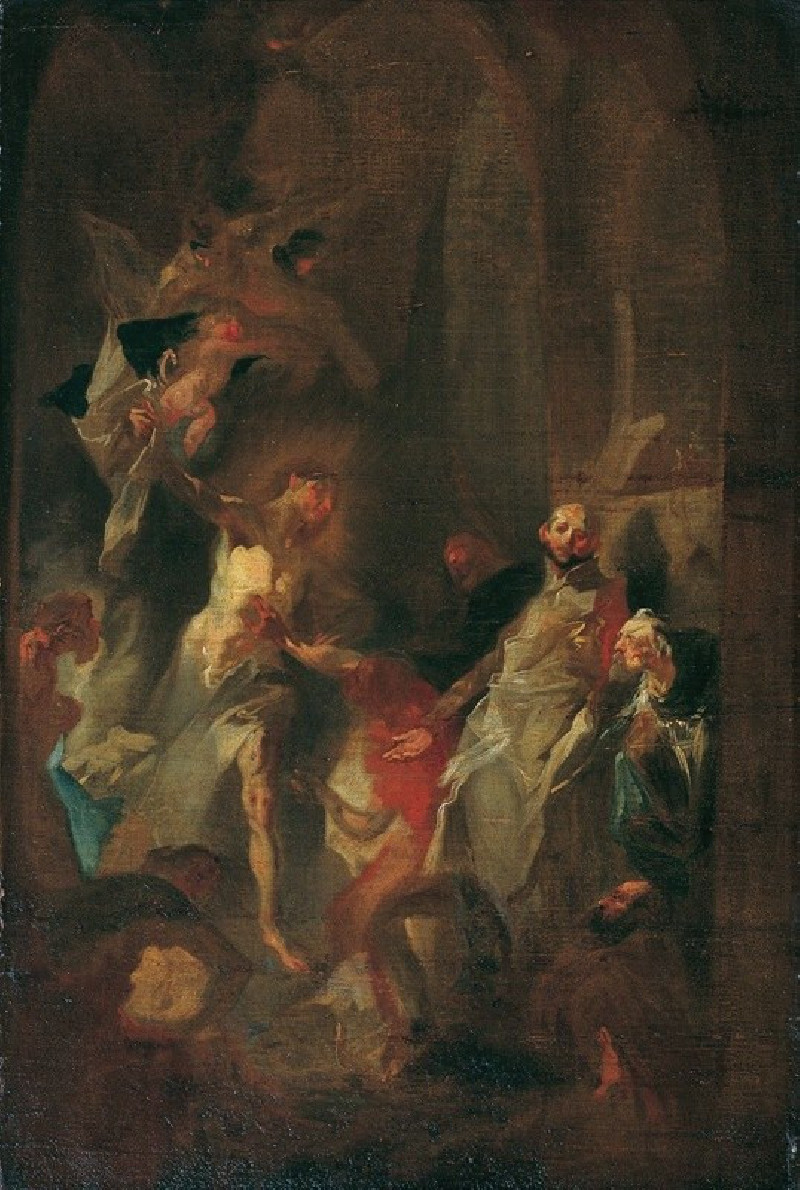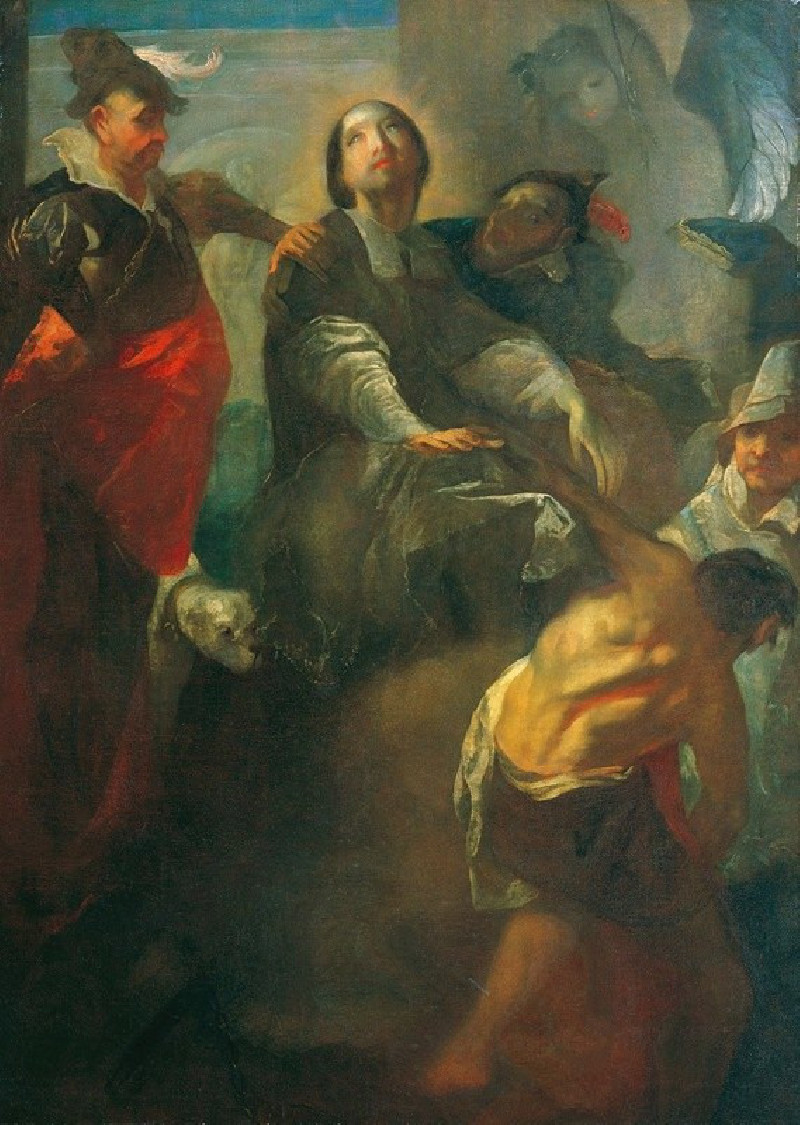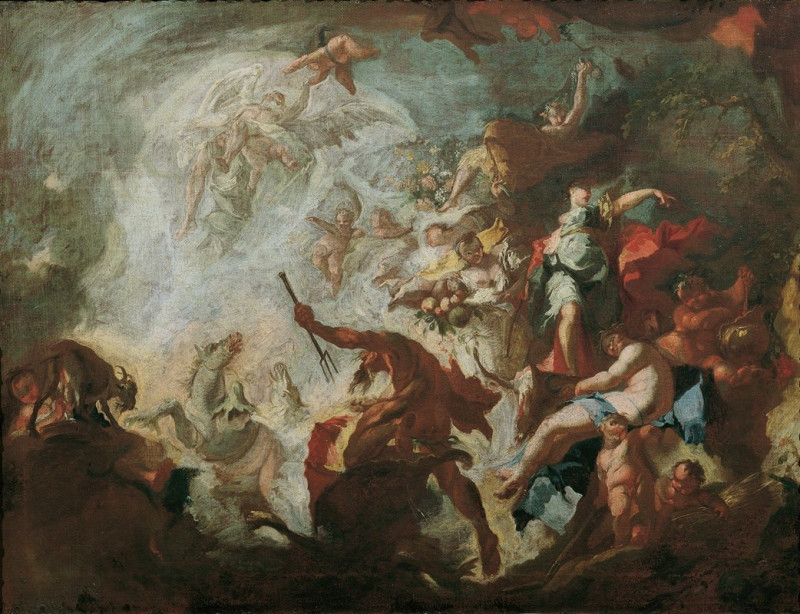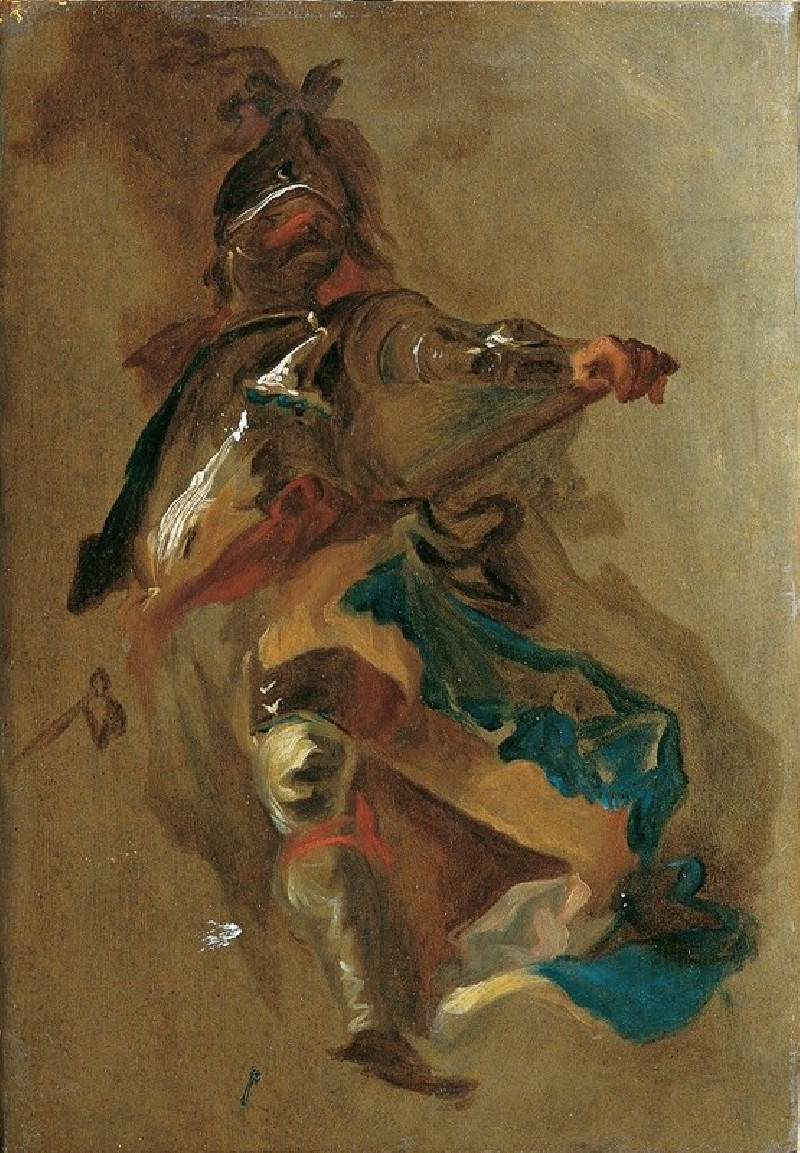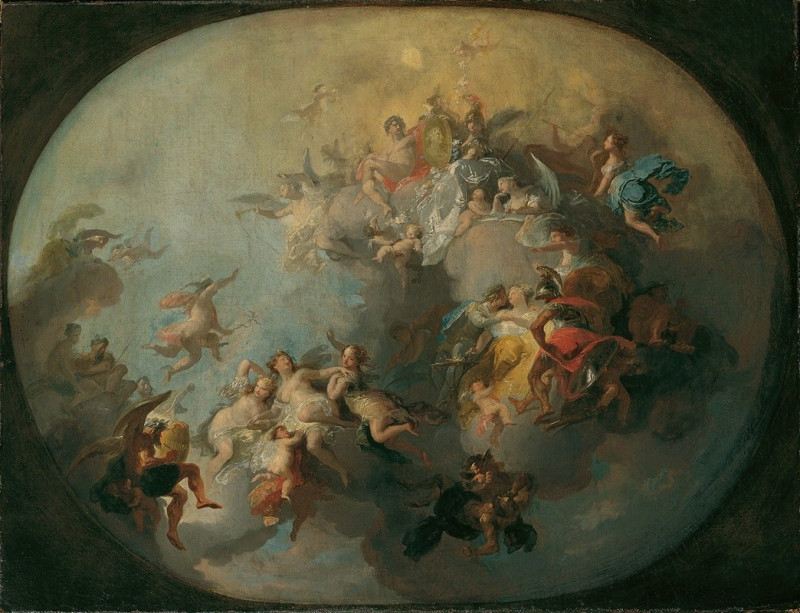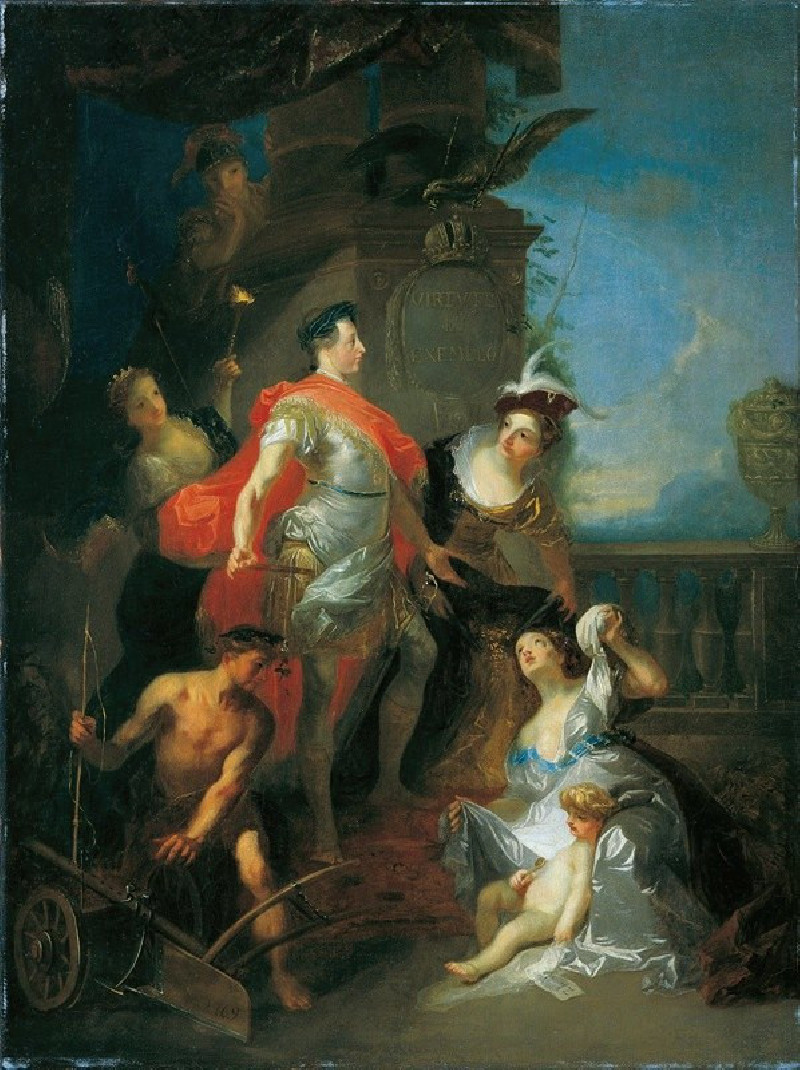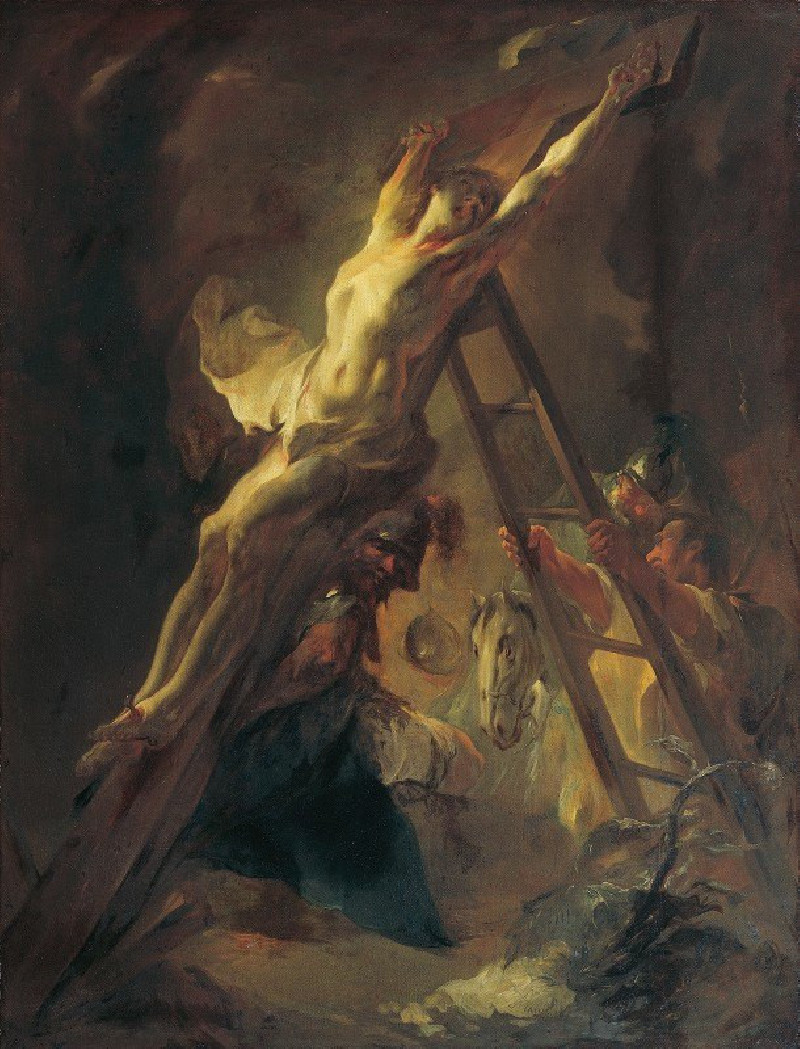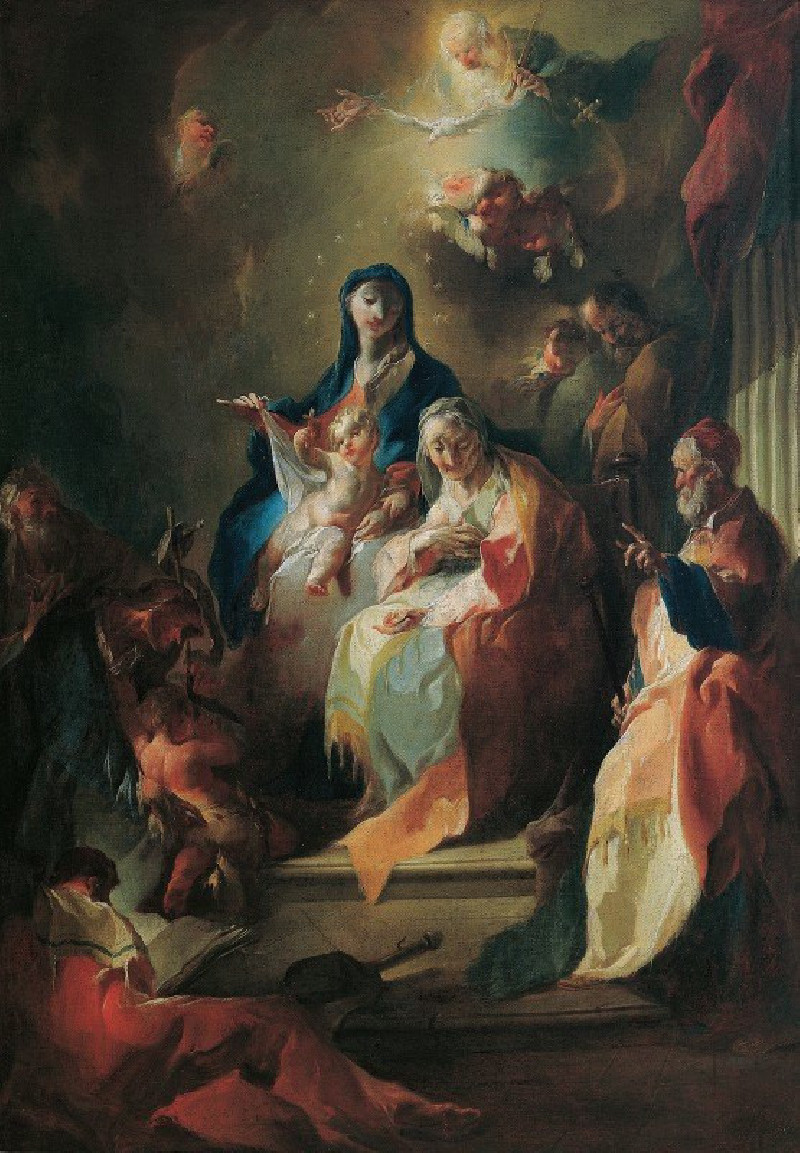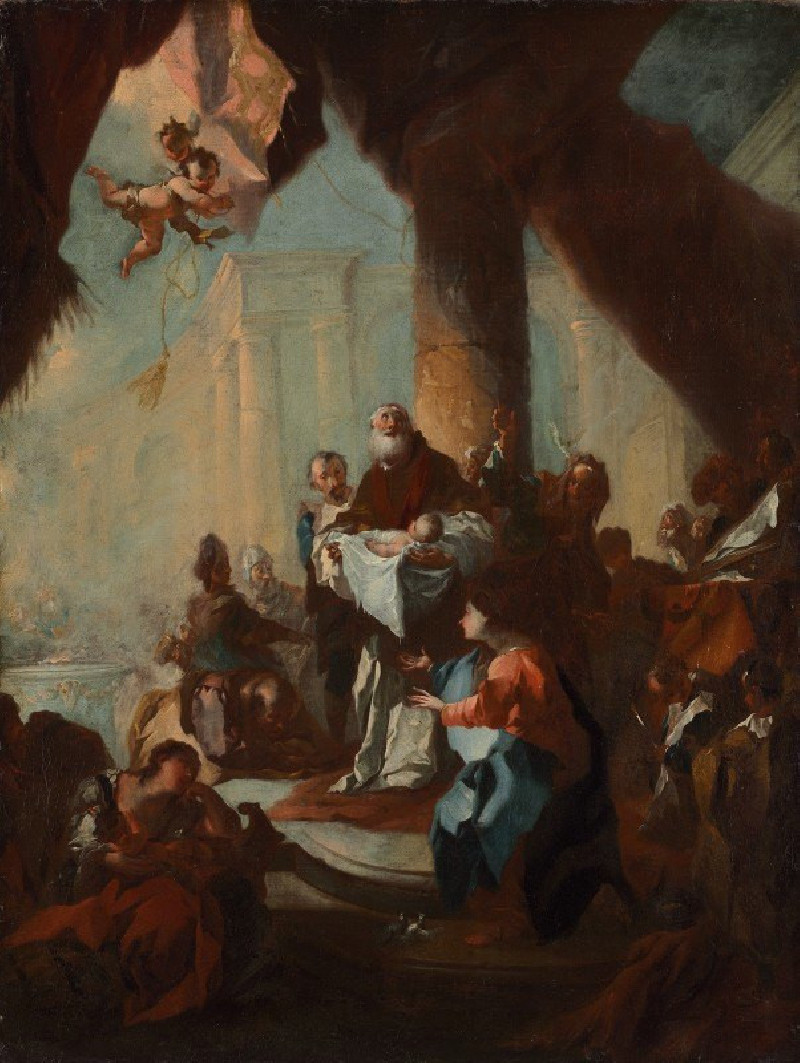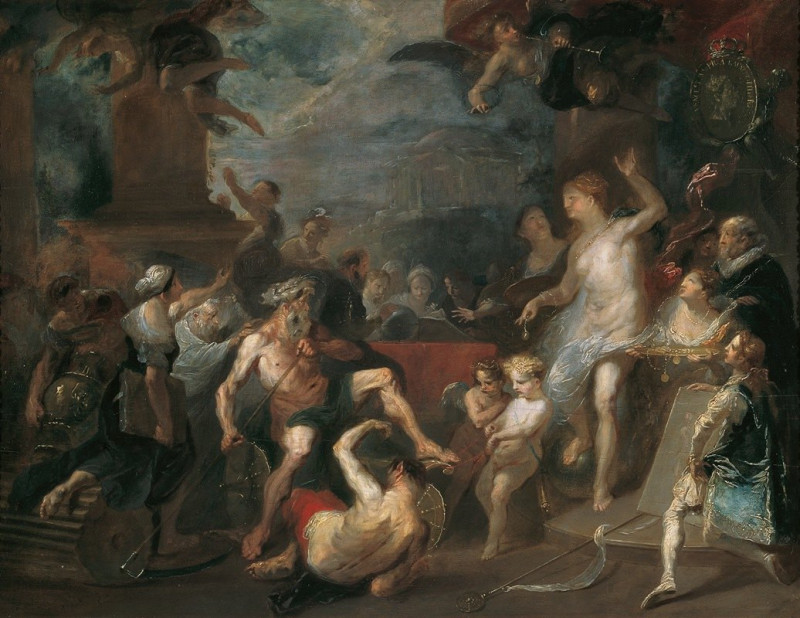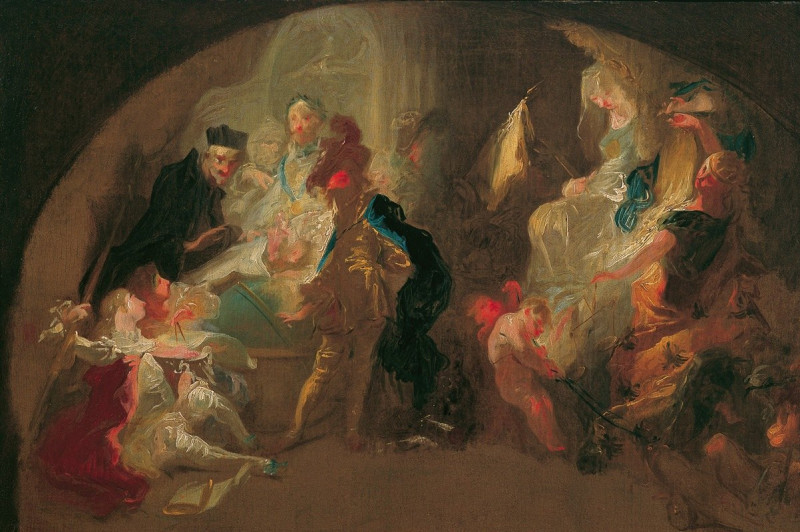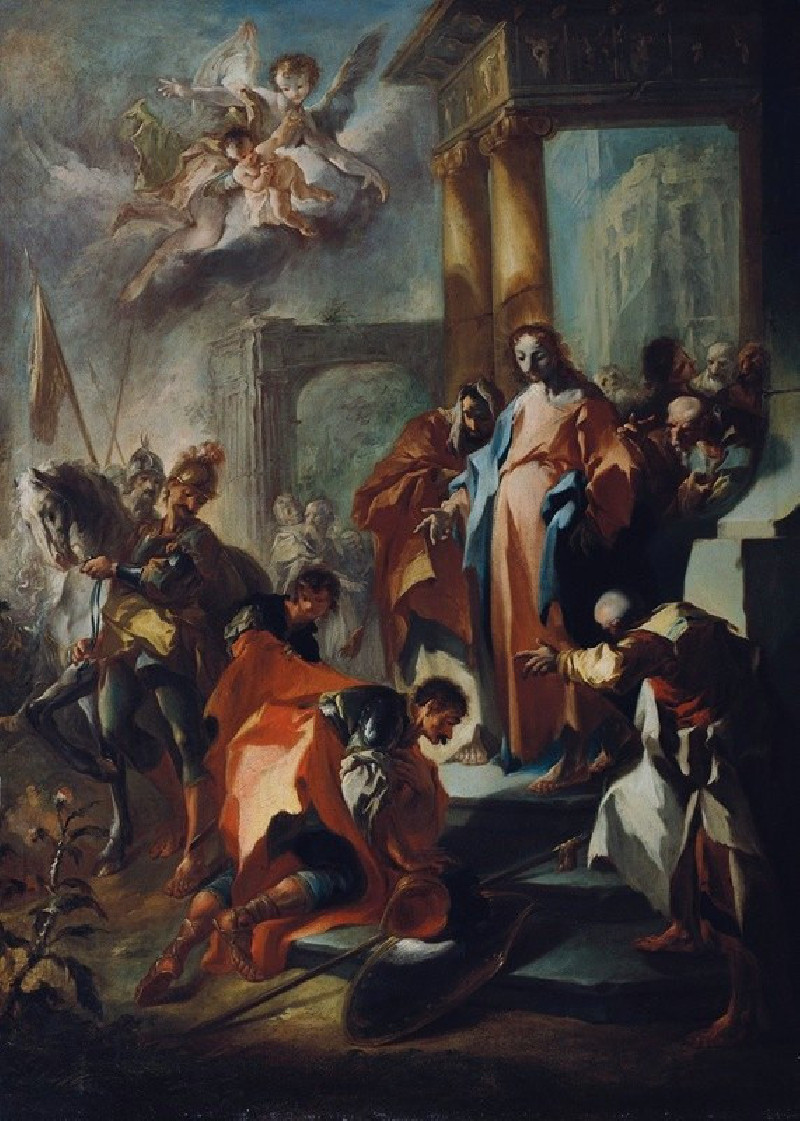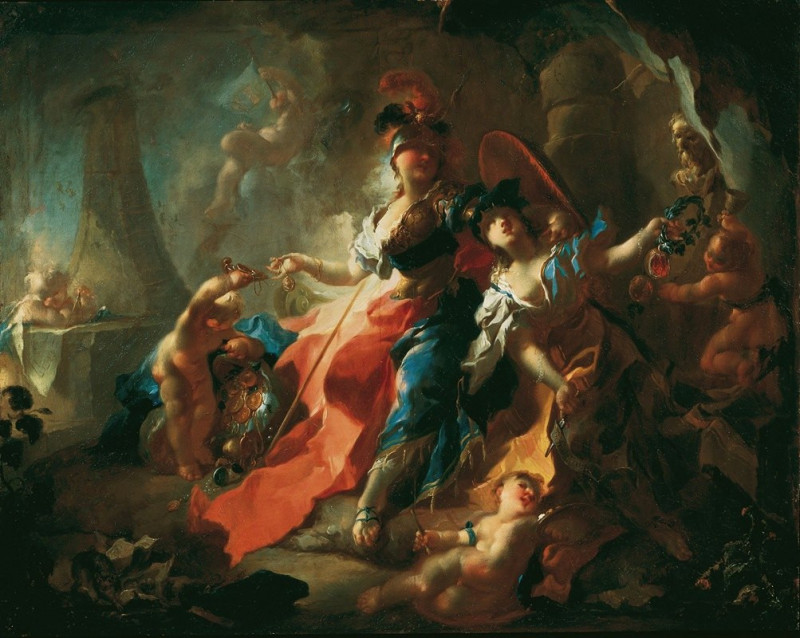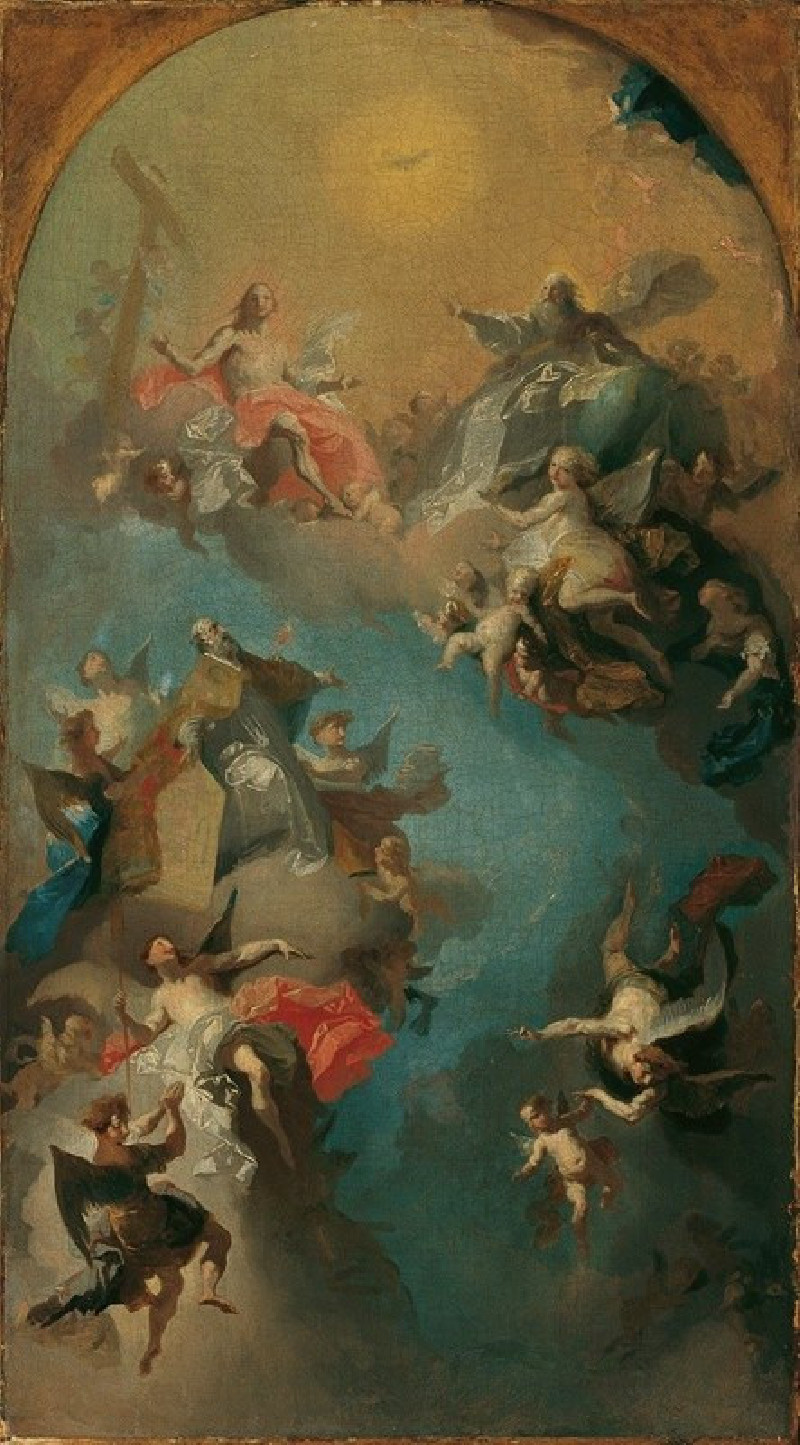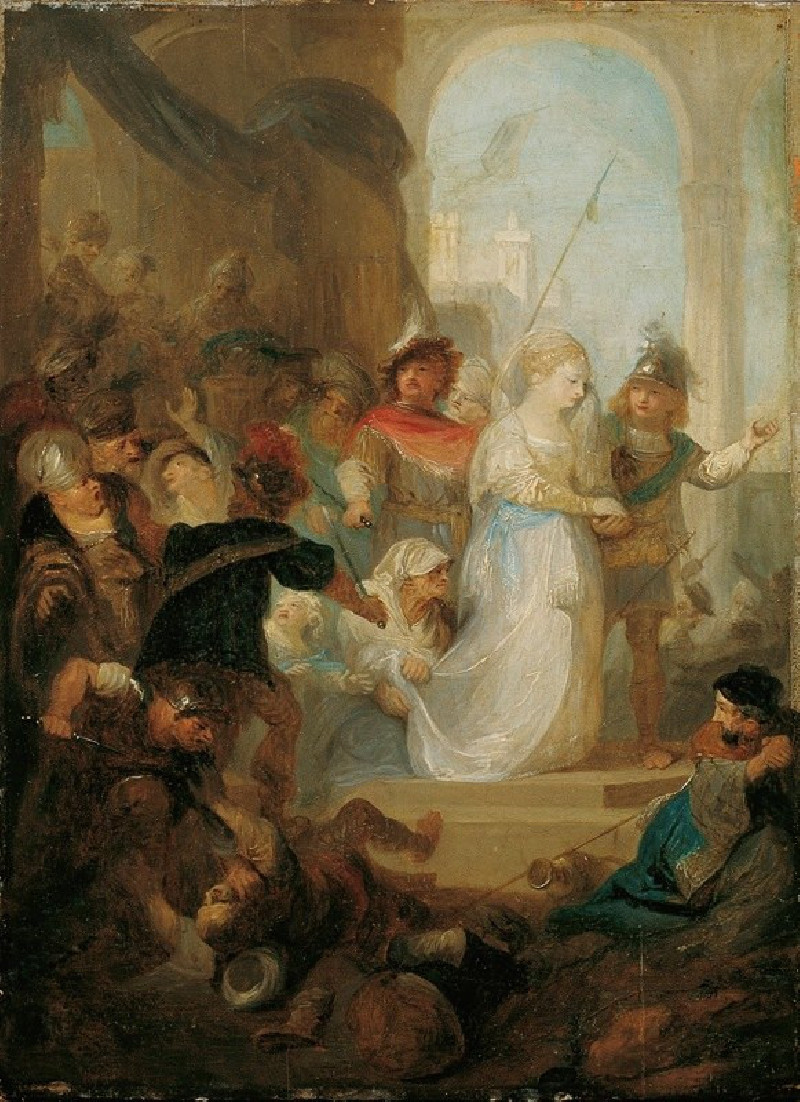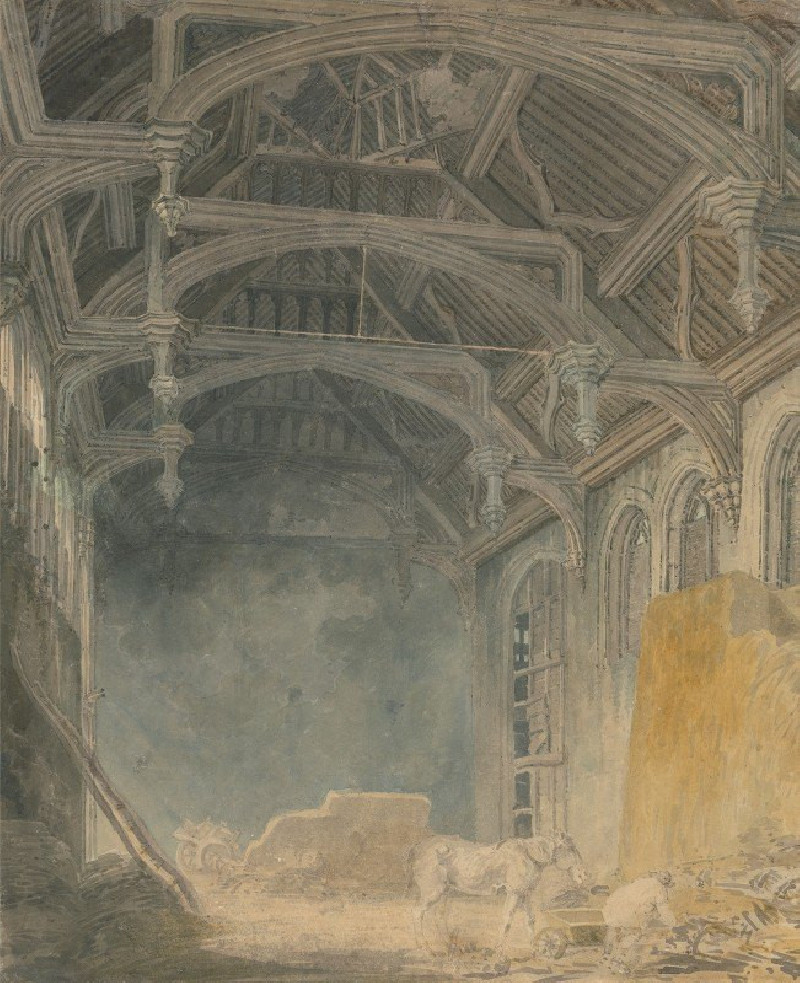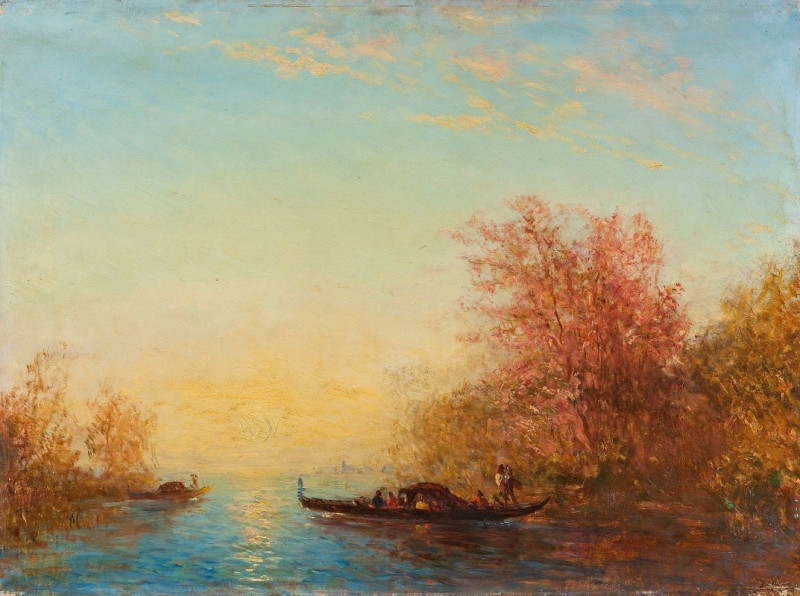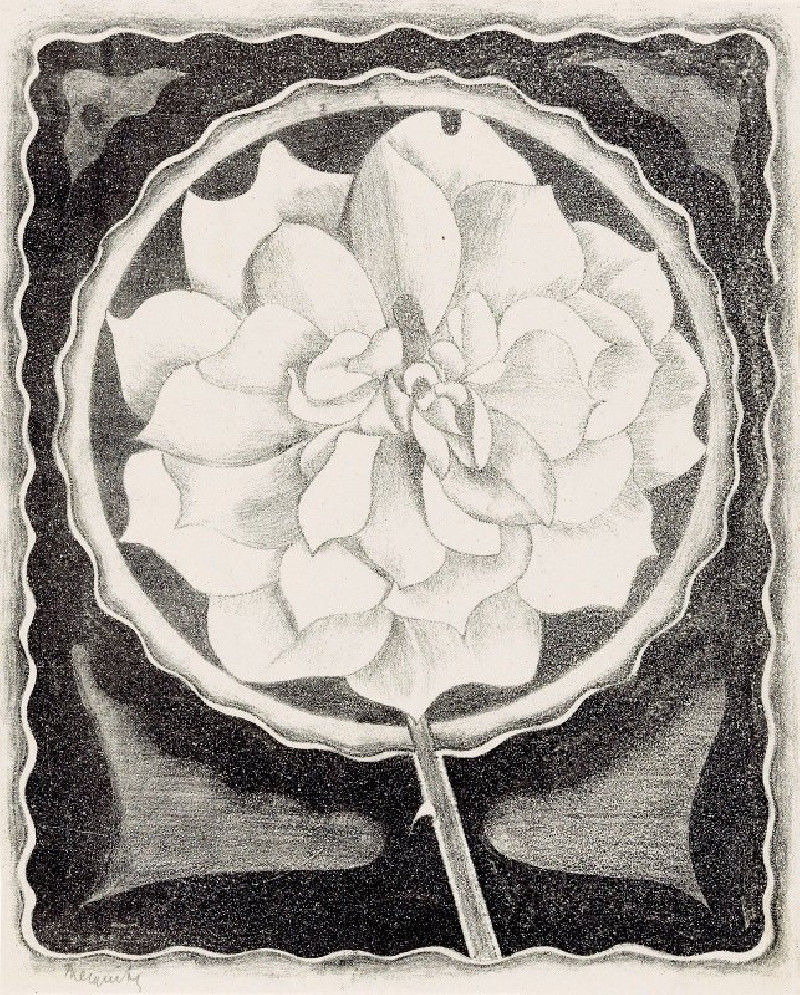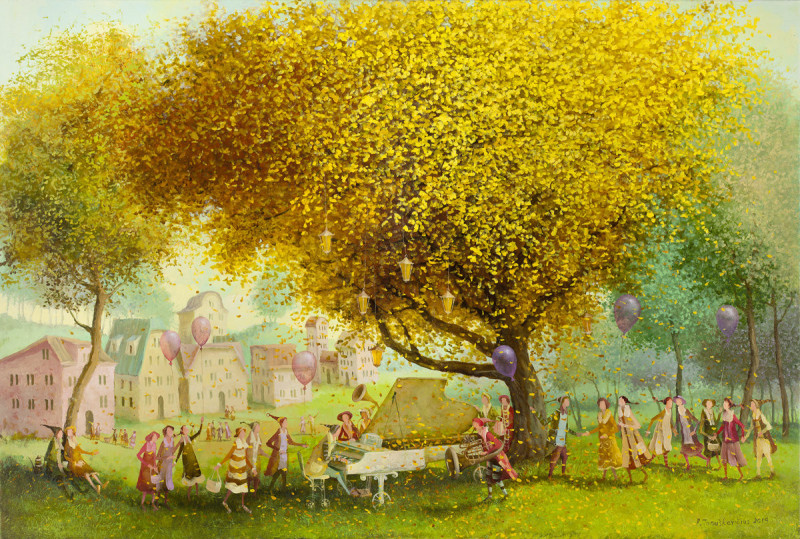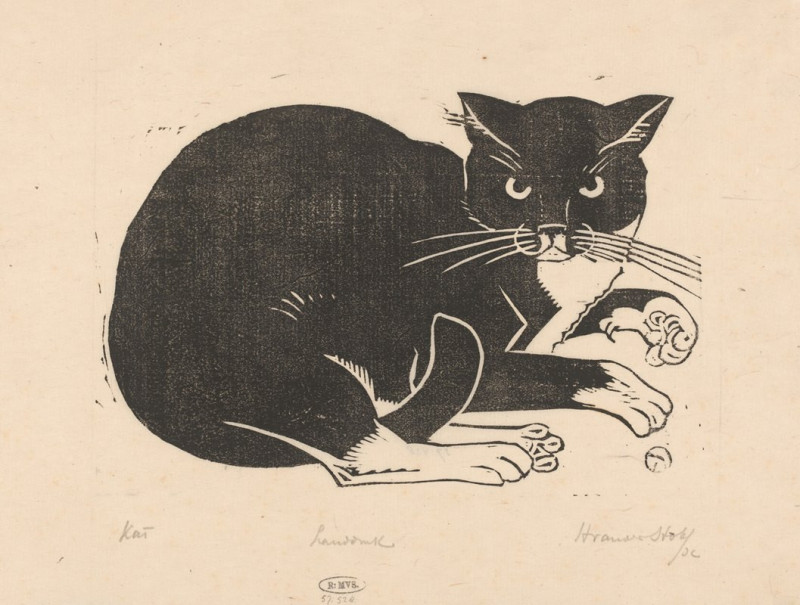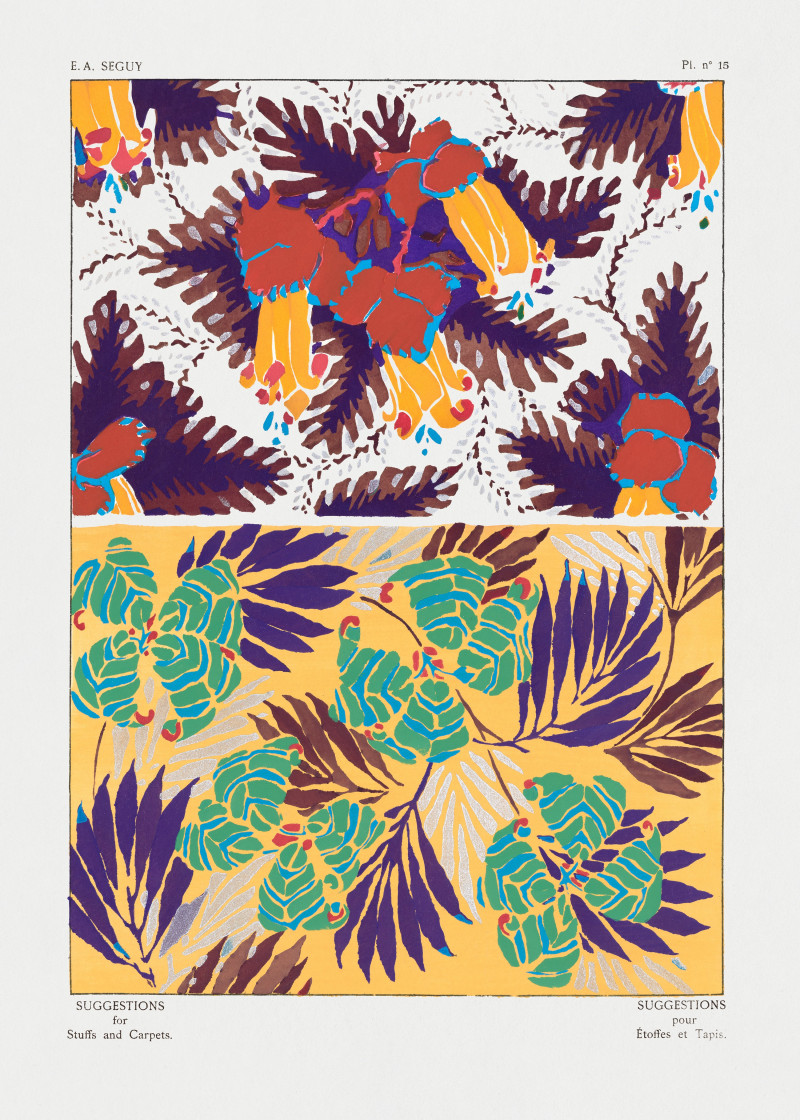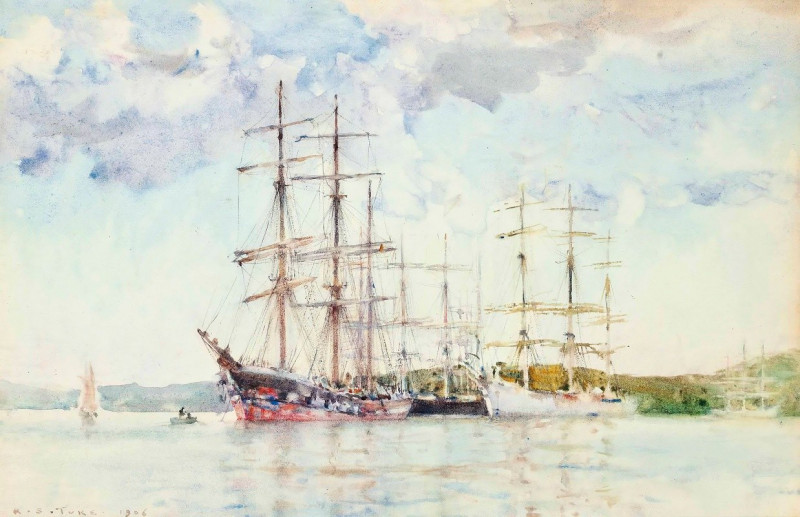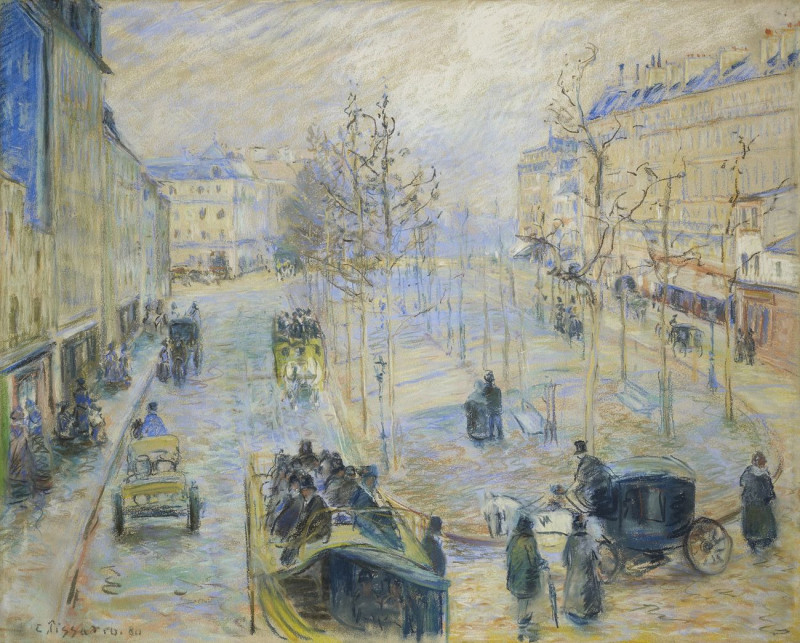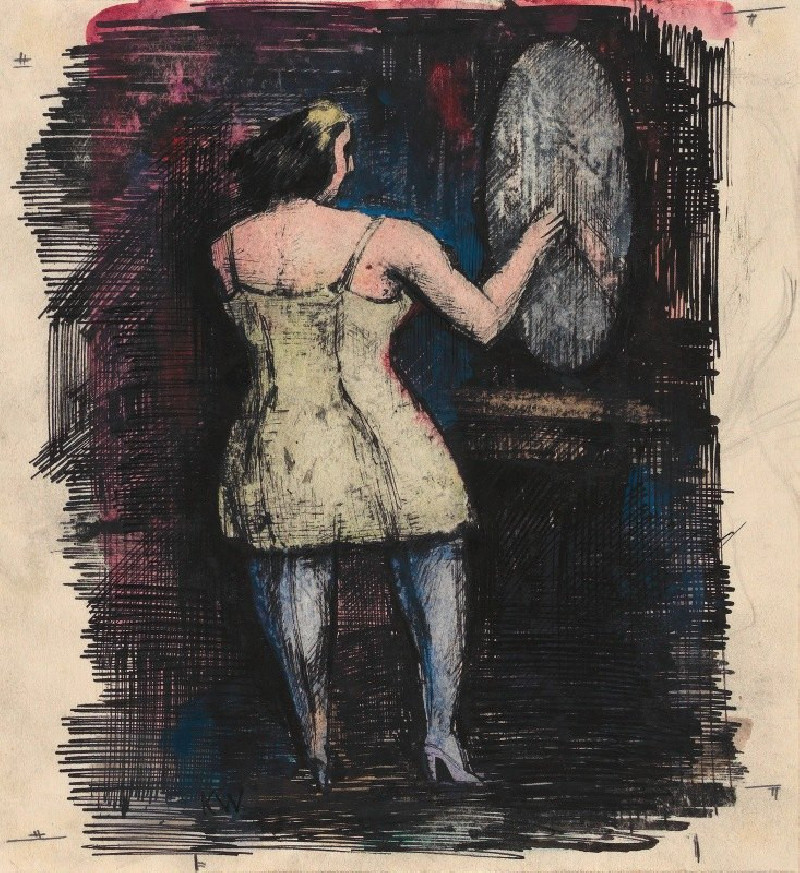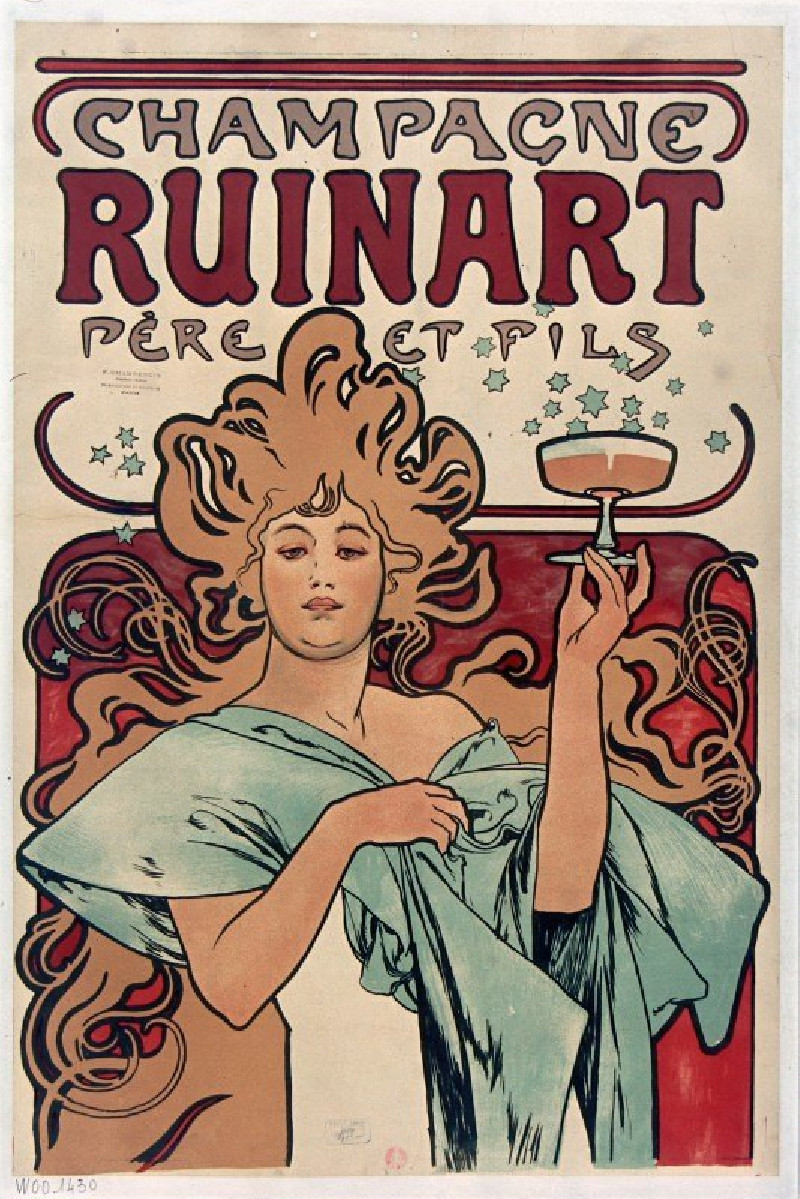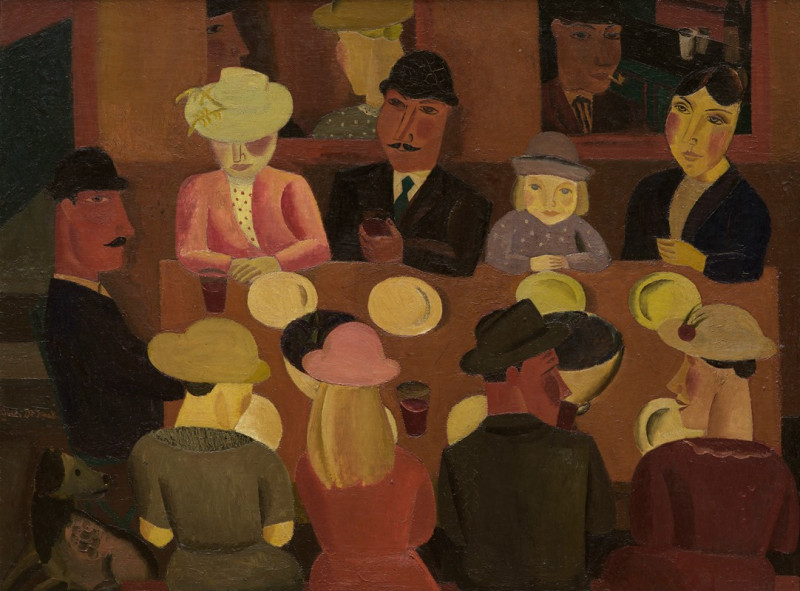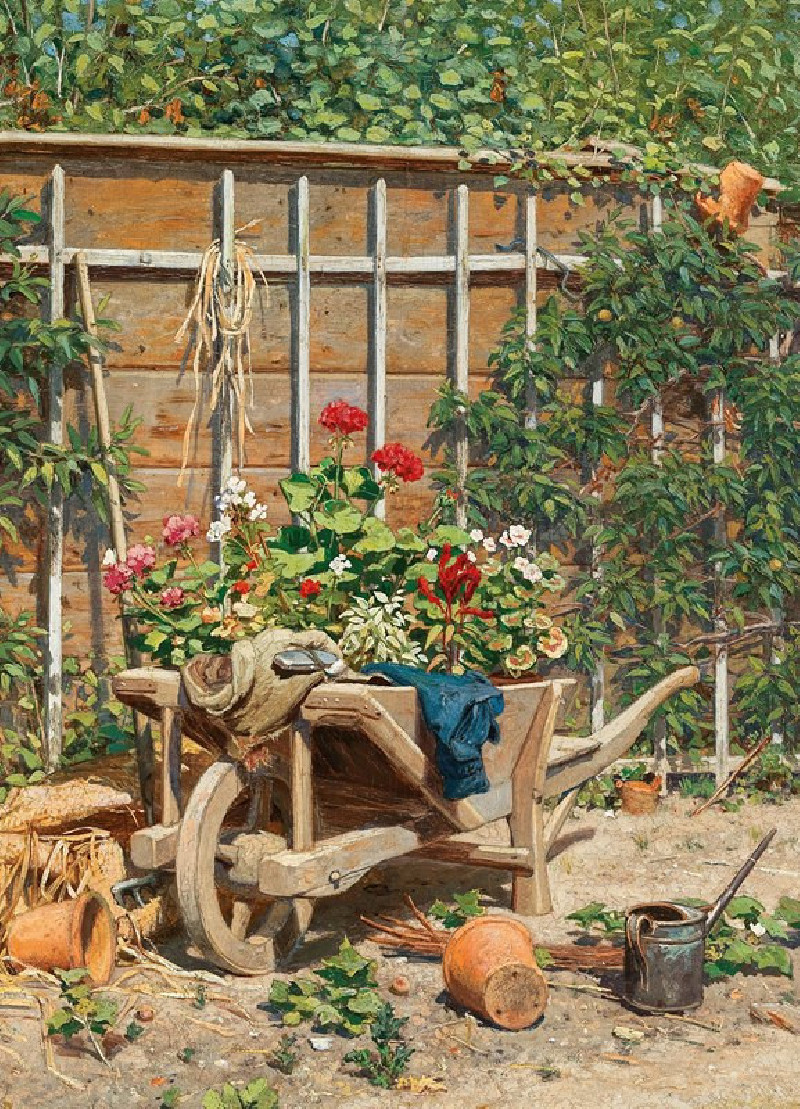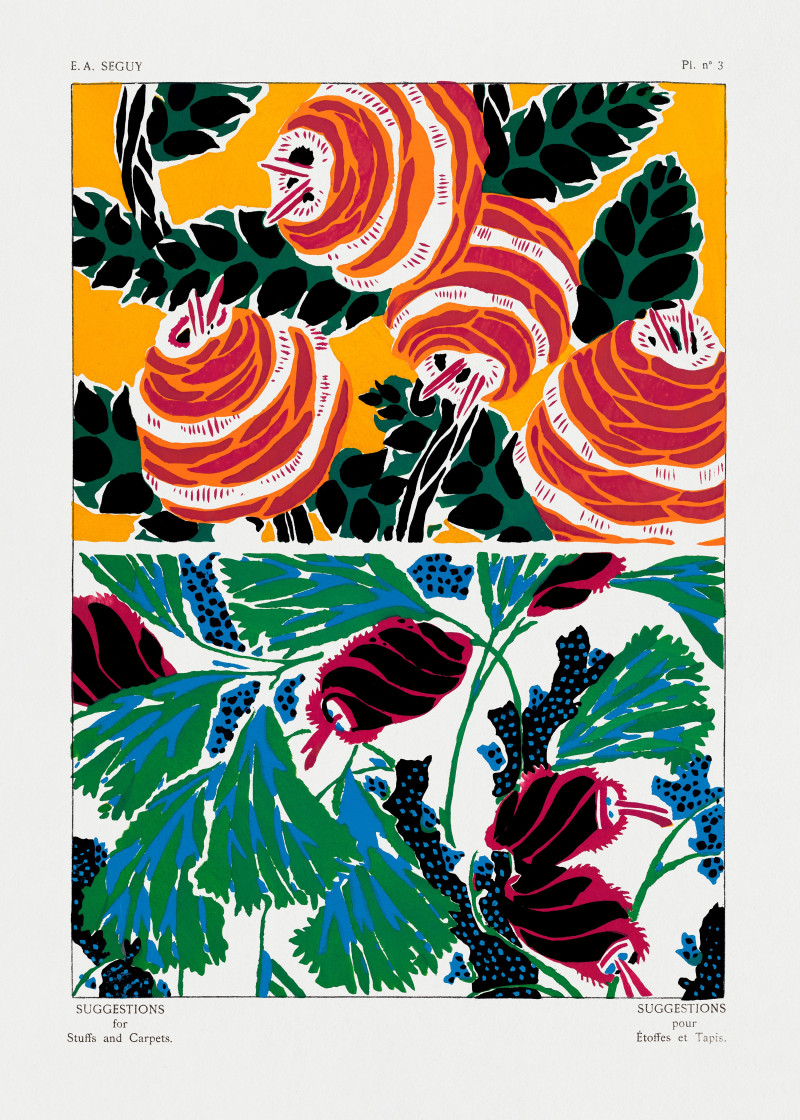Christ And The Doubting Thomas (1755–1757)
Technique: Giclée quality print
Recommended by our customers
More about this artwork
Franz Anton Maulbertsch's painting, "Christ And The Doubting Thomas," created between 1755 and 1757, is a stirring portrayal of one of the most poignant episodes in the New Testament. The artwork captures the moment when the resurrected Jesus invites Thomas, one of his apostles, to verify His wounds to overcome his disbelief in Christ's resurrection.The composition is intimate and theatrical, focusing on the figures of Christ and Thomas. The setting is subdued, employing dark hues that contrast powerfully with the radiance emanating from Christ's figure, symbolizing His divine nature and the miracle of resurrection. Thomas, depicted with an expression of awe and curiosity, reaches out to touch Christ's wound, his face close enough to feel His breath, emphasizing the human aspect of doubt and faith.Maulbertsch, known for his vibrant use of color and dynamic compositions, uses the interplay of light and shadow to enhance the emotional depth of the scene. The painting not only explores the themes of disbelief and proof but also delivers a profound message about faith and redemption through personal experience.
Delivery
Returns
Franz Anton Maulbertsch (June 7 , 1724 - August 8 , 1796 ) was, alongside Martin Johann Schmidt , the most outstanding painter of the Austrian late Baroque . His expressive art initially broke with tradition, ultimately culminating in classicism and completing Austrian Baroque painting in an idiosyncratic and independent way.

